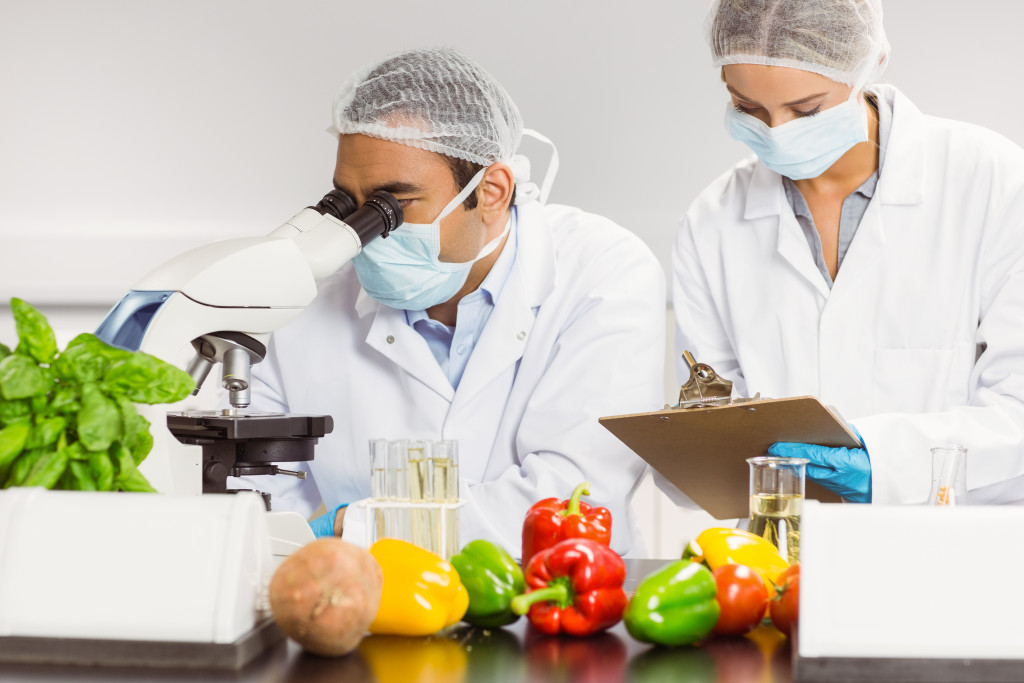- Safety in the food and beverage industry is key to ensuring that products consumed by individuals are safe.
- Technology has revolutionized the food and beverage industry by providing traceability for products.
- Smart labeling and packaging are essential for the food and beverage manufacturing industry.
- Automatic packaging inspection systems ensure products are adequately sealed and safe for consumption.
- Hazard Analysis and Critical Control Points (HACCP) require identifying and eliminating potential hazards.
Safety in food and beverage manufacturing is crucial as it entails handling products consumed by individuals. In today’s world, where most consumers prefer convenience over anything else, the industry must ensure that its products are safe to drink.
Therefore, technology has significantly played a vital role in ensuring that businesses and entrepreneurs in the food and beverage industry comply with safety regulations and increase efficiency in production.
Traceability and Quality Control
Technology has revolutionized the food and beverage industry by providing traceability for products, making it possible to track the journey of each product from the field to the store. Through technology, businesses can now identify the source of raw materials and assess its quality and safety before processing.
This applies to identifying allergens, nutritional information, and expiration dates, amongst other essential information. The automation of quality control using advanced sensors that detect contamination, foreign objects, and chemical compositions has improved accuracy and reduced rejections during production.
Smart Labeling and Packaging

Smart labeling and packaging are crucial components of the food and beverage manufacturing industry. With so many products on the market, often with similar ingredients and nutritional values, it can be difficult for consumers to distinguish one. Smart labeling, such as QR codes that link to product information or intelligent packaging that senses when food is spoiled, can give customers the information they need to make informed decisions.
Additionally, automatic packaging inspection systems can help ensure these products are adequately sealed and safe for consumption. These technological advancements benefit consumers and manufacturers, who can streamline their production processes and minimize waste. By incorporating smart labeling and packaging solutions, the food and beverage industry can continue to improve its products’ safety and transparency while meeting consumers’ ever-evolving demands.
Hazard Analysis and Critical Control Points (HACCP)
The HACCP is a preventive food safety program. It requires identifying potential hazards, eliminating them, and establishing control measures to reduce any risks observed. Technology has made HACCP possible by introducing advanced data collection and reporting software solutions.
The software solutions help track data on environmental conditions, product safety hygiene protocols, and compliance with safety regulations. This makes it possible to mitigate risks such as bacterial contamination, mislabeling, and adulteration that could result in foodborne diseases.
Hands-Free Technologies
With technological advancements, the food and beverage industry has experienced many positive changes. One such change is the use of hands-free technologies. Here are some of them:
Cook-chill technology
Cook-chill technology is a system that allows the operator to cook food in advance and preserve the quality of the food by rapidly cooling it. This hands-free technology has been used in institutional kitchens for a long time and has now made a comeback in commercial kitchens. It is an established technique that has been around for over thirty years, and many restaurants of all sizes have embraced it.
Self-service restaurants

Self-service restaurants are becoming a popular trend in the food and beverage industry. This hands-free technology eliminates the need for servers or cashiers, allowing customers to place orders through kiosks or mobile apps. Self-service restaurants offer customers the freedom to order, pay and pick up their food without interacting with other people.
Automated beverage dispensers
Automated beverage dispensers save on labor and provide customization to customers. Picture a restaurant set up with stations that allow the customers to mix their sodas – a touch of Dr. Pepper, a shot of Coke, a little Sprite, and a dash of Fanta. Customers can get creative in their drink-building. Additionally, these dispensers allow for the elimination of human contact. With contactless payment options and single-use cups from dispensers, touch screens are still prevalent.
Robotic food preparation
Robotic food preparation is a hands-free technology that has been making its mark on the food and beverage industry. From automated fryers and grills to structured food-cutting and topping applications, there seems to be a robotic solution for every task in a kitchen. Mechanical food preparation has been trending in businesses because they have been proven to reduce labor costs significantly while providing high-quality results.
Final Thoughts
In conclusion, technology is vital in ensuring food and beverage manufacturing and production safety. Businesses and entrepreneurs in the food and beverage industry must embrace technology to ensure compliance with safety standards and regulations and increase efficiency in production. With technological advancements, the industry is sure to improve, and the well-being of consumers will be guaranteed.

